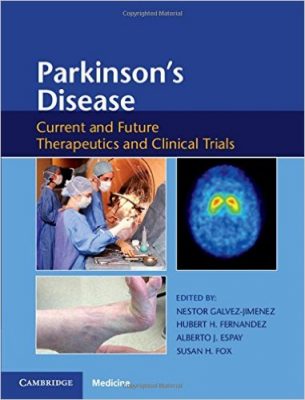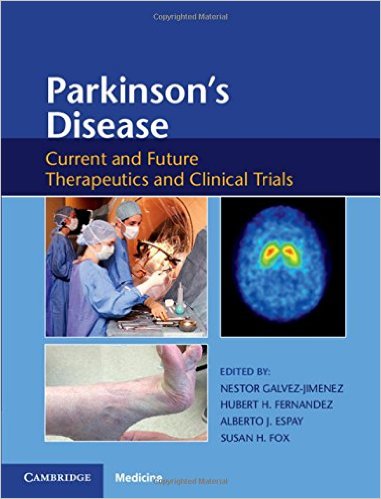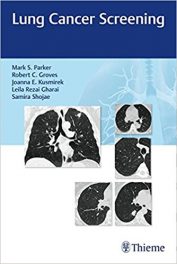 Editors: Nestor Galvez-Jimenez, MD; Hubert H. Hernandez, MD; Alberto J. Espay, MD; and Susan H. Fox, MD
Editors: Nestor Galvez-Jimenez, MD; Hubert H. Hernandez, MD; Alberto J. Espay, MD; and Susan H. Fox, MD
Publisher: Cambridge University Press – 367 pages
Book Review by: Nano Khilnani
Parkinson’s disease is basically a long-term degenerative disorder of the central nervous system (CNS) primarily affecting the motor system that guides physical movement. The symptoms emerge slowly over time. Difficulty with waking, rigidity, shaking, and slowness of movement are the most obvious symptoms in the early onset of disease.
In underdeveloped countries, less educated people assume that these are natural signs of aging and do not consult doctors. But in developed nations where there is awareness, medical specialists in this disease are consulted and treatment ensues. The exact cause of Parkinson’s is generally unknown, but is believed to involve genetic and environmental factors
Parkinson’s disease has its origins in England. In 1817, James Parkinson (1755-1824), an apothecary who also had diverse interests in geology, palaeontology, and politics, wrote An Essay on Shaking Palsy that described a condition he termed paralysis agitans. This was later named Parkinson’s disease by Jean-Martin Charcot.
The editors write in chapter 1 that James Parkinson described the ‘shaking palsy’ as an “involuntary voluntary tremulous motion with lessened power in parts not in action and even when supported; with a propensity to bend the trunk forward, and to pass from a walking to a running pace.” They point out that Parkinson was referring to festination, more accurately described in that era as scelotyrbe festinans wherein “the sense and intellects being uninjured.”
The editors point out however: “Parkinson’s disease is no longer considered only a motor disorder. It has become evident that the pathological changes are broad, the progression seems to follow a pattern suggesting transynaptic transmission via temptation of proteins in a prion-like fashion, and that these pathological changes usually antedate the motor symptoms by decades.”
In other words, some changes happen in the central nervous system before the physical symptoms such as rigidity, shaking, and slowness in movement become evident. Research however on what else happens besides movement disorders, to Parkinson’s patients, is inconclusive.
This book focused on the treatment options for Parkinson’s disease, is the combined work of many. Seventy-one specialists in the neurosciences (including basic neurology, neuro-cognitive rehabilitation, neuro-imaging, neurological restoration, neuromuscular disorders, and neurosurgery) as well as allied fields such as epidemiology and psychiatry, authored the 32 chapters of this extensive yet compact work.
The contributors are mainly from the United States, but also from 11 other countries, namely: Argentina, Canada, France, Germany, Israel, Italy, Malaysia, Mexico, Spain, Sweden, and the United Kingdom. The chapters cover a long range of topics in the study of Parkinson’s disease, and they are grouped into four Sections, which are:
- Section I – The Pharmacological Basis for Parkinson’s Disease Treatment
- Section II – Management of Nonmotor Symptoms of Parkinson’s Disease
- Section III – Surgical Management of Parkinson’s Disease
- Section IV – Clinical Trials in Parkinson’s Disease: Lesions, Controversies and Challenges
This book:
- Assesses pharmacologic and surgical interventions for all aspects and stages of Parkinson’s disease
- Examines evidence from randomized controlled clinical trials to develop practical recommendations for clinical practice.
- Looks at lessons learned from clinical trials, as well as controversies and future challenges
- Provides scientific foundations for better understanding Parkinson’s disease, the underpinnings of the pathological processes, the identification of disease biomarkers, and the basis for solid therapeutics
In summary, this is an excellent book on the most current scientific knowledge we have so far on Parkinson’s disease, including surgical management, results from clinical trials, and the most current and future treatment options available with drugs.
Editors:
Nestor Galvez-Jimenez, MD is Professor of Medicine (Neurology – Florida) in the Cleveland Clinic Lerner College of Medicine at Case Western Reserve University, He is also Pauline M. Braathen Endowed Chair; Director of the Neurological Center, Chairman of the Department of Neurology, and Chief of the Movement Disorders Unit at the Cleveland Clinic in Weston, Florida
Hubert H. Hernandez, MD is Head of the Division of Movement Disorders in the Department of Neurology at the Cleveland Clinic in Cleveland, Ohio.
Alberto J. Espay, MD is Associate Professor of Neurology, Director and Endowed Chair of the James I and Joan A Gardner Center for Parkinson’s Disease and Movement Disorders at the University of Cincinnati Academic Health Center in Cincinnati, Ohio.
Susan H. Fox, MD is Associate Professor of Neurology at the University of Toronto; Associate Director of the Movement Disorders Clinic at Toronto Western Hospital; and Staff Neurologist in the Division of Neurology in the Department of Medicine at University Health Network in Toronto, Canada.







